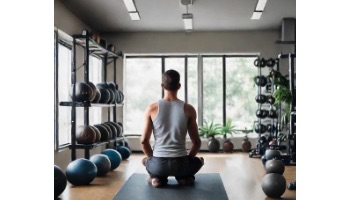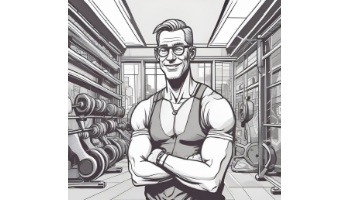Determining what shoes to wear for exercise can be tricky. The best way to approach it is the same way you think about training—ask yourself what the goal is. With that in mind, here are three common shoe types, what they do, and why you may or may not want to use them.
Running Shoes
 The idea behind running shoes is obvious: more cushion and more support. They usually have a fair amount of padding and some level of arch support. The interesting thing to understand with running shoes is that there are some suspicions about their effectiveness. Some research contends that the extra padding in the shoe makes the foot and its muscles less reactive to hitting the ground. Since they are encased in padding, the argument goes, they can’t sense the impact the way they would when barefoot. With their natural responses inhibited, the impact might actually do more damage than normal, leading to pain and injury.
The idea behind running shoes is obvious: more cushion and more support. They usually have a fair amount of padding and some level of arch support. The interesting thing to understand with running shoes is that there are some suspicions about their effectiveness. Some research contends that the extra padding in the shoe makes the foot and its muscles less reactive to hitting the ground. Since they are encased in padding, the argument goes, they can’t sense the impact the way they would when barefoot. With their natural responses inhibited, the impact might actually do more damage than normal, leading to pain and injury.
That being said, since we start wearing shoes at a very early age our feet have changed significantly by the time we are purchasing running shoes. (You can read more about that here.) If you’ve been wearing runners for years and become highly accustomed to what they offer, you might want to continue. At this point, it may be what you are best adapted for.
Minimal Shoes And Barefoot
 To piggy-back off the running shoes, minimal shoes are based on the idea that our feet shouldn’t have so much padding and support around them. They have minimum padding and support so that the foot must use its own sensory organs and muscles to react naturally to the ground. Some people have taken this concept all the way to its natural conclusion and have opted to go completely barefoot, even while running.
To piggy-back off the running shoes, minimal shoes are based on the idea that our feet shouldn’t have so much padding and support around them. They have minimum padding and support so that the foot must use its own sensory organs and muscles to react naturally to the ground. Some people have taken this concept all the way to its natural conclusion and have opted to go completely barefoot, even while running.
For some, going to minimal shoes or barefoot has positive impacts. It can help solve foot and ankle issues as well as problems further up the chain, like the knee, hip, and low back. However, as mentioned above, one should not simply leap into this. If you have almost always worn robust shoes then you’ll want to think of your feet as being out of shape. They’ve spent years in comfortable, supportive shoes and are no longer as strong or resilient as they once were. If you want to try minimal or barefoot you’ll have to retrain them which means starting slow, building carefully, and always watching for your limits. Some of us do very well barefoot, others can’t tolerate it at all, and some are in the middle. You’ll have to find out which one is you.
Lifting Shoes
 Thanks to exercise modalities like CrossFit, more people are using big, compound lifts like squats, deadlifts, cleans, and even snatch. Lifting shoes are designed with those exercises in mind. The two main features of lifting shoes are hard soles of wood, hard plastic, or sometimes leather and a heel lift. The hard sole helps you to more effectively transfer force through the ground. When you are trying to squat a couple hundred pounds, you don’t want something soft and squishy between you and the floor. The heel lift gives you a little more range of motion at the ankle joint, which helps you to squat deeper while controlling your center of gravity more easily.
Thanks to exercise modalities like CrossFit, more people are using big, compound lifts like squats, deadlifts, cleans, and even snatch. Lifting shoes are designed with those exercises in mind. The two main features of lifting shoes are hard soles of wood, hard plastic, or sometimes leather and a heel lift. The hard sole helps you to more effectively transfer force through the ground. When you are trying to squat a couple hundred pounds, you don’t want something soft and squishy between you and the floor. The heel lift gives you a little more range of motion at the ankle joint, which helps you to squat deeper while controlling your center of gravity more easily.
Do you need lifting shoes? That just depends. If you are interested in getting competitive with your lifting then the answer is yes. If you are simply in it for the fitness, then it is really up to you. You might like the slight advantages that lifting shoes offer, but they are by no means a necessity.


